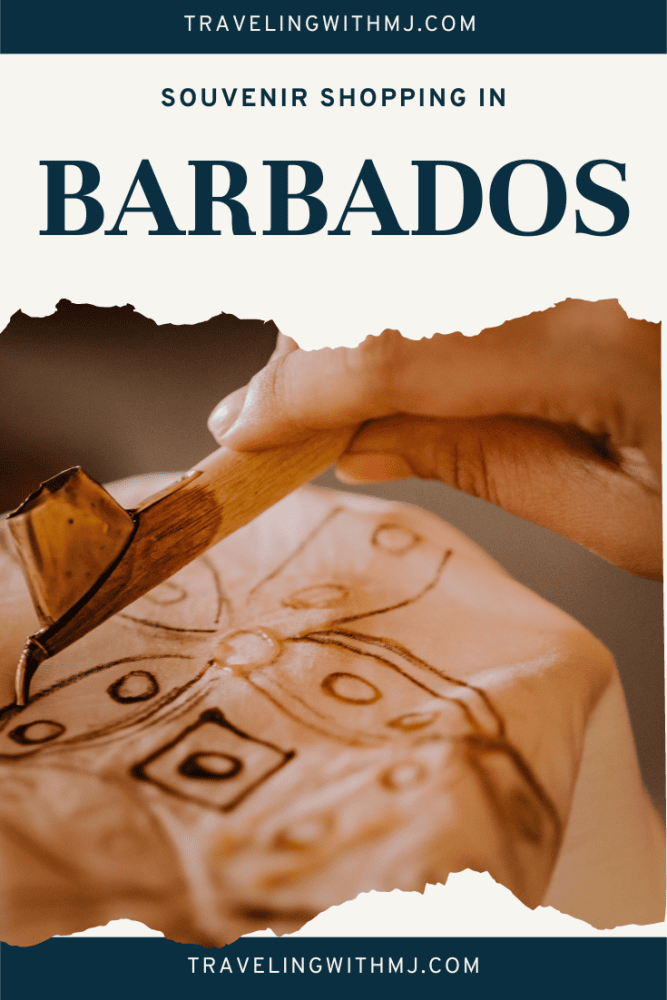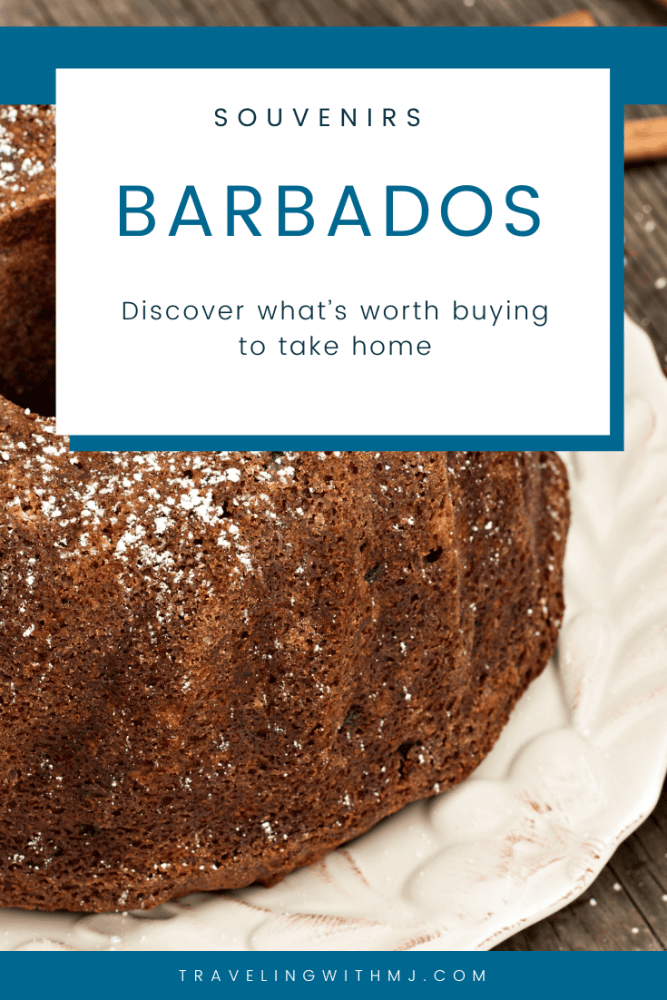Barbados is located in the eastern Caribbean islands and is part of the British Commonealth. It offers spectacular scenery, clear blue waters, and sandy beaches.
Bridgetown, the country’s capital city, is a UNESCO World Heritage City and blends colonial charm with a modern Caribbean beat. The Garrison Historic Area, Trafalgar Square, Bridgetown Jewish Synagogue, Broad Street and Grand Market are all places worth visiting for visitors look for a cultural and historical fix.
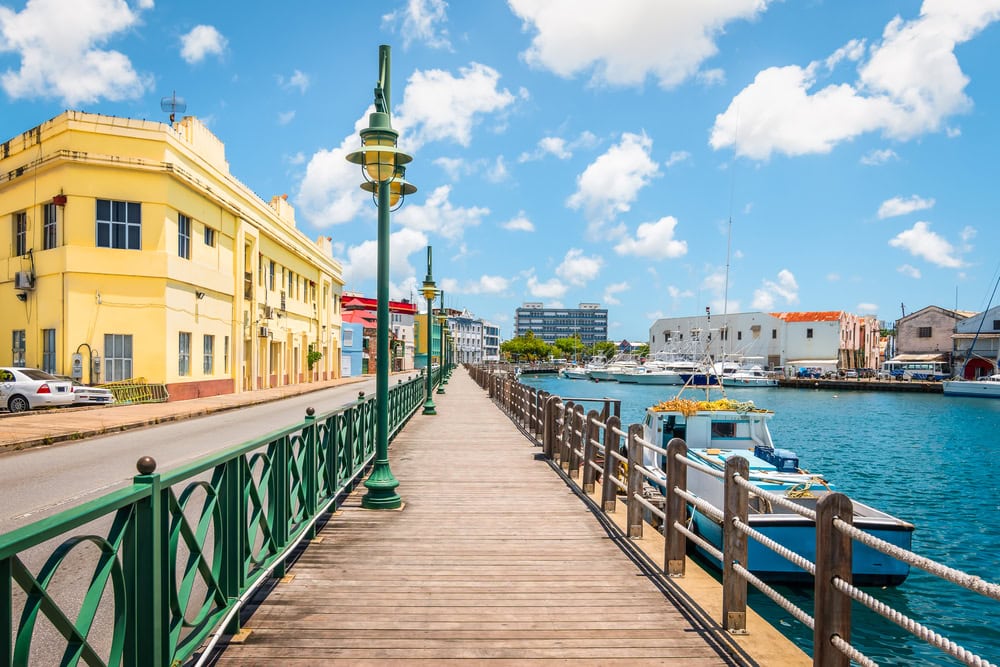
We visited Barbados as the embarkation for our tall ship sailing experience onboard the Royal Clipper (read our review of the cruise here). When traveling for a cruise, we always ploan to arrive a few days early — just in case something goes wrong with our travel plans. Nothing did on this trip, and we got to soak up a few days in the delights of the island, slurp up plenty of Barbados rum punch, toured the island, and did a little shopping before we boarded our ship.
We stayed a couple of nights at the South Beach Hotel near Rockley Beach and the South Coast Boardwalk. Booking information here (affiliate link). The hotel has recently undergone a rebrand and is now known as the Rockley.
We like to bring home souvenirs from travel, usually food and other consumable products, along with art for our home. We always prefer to support the local businesses when we shop, and have found street markets and local shops are a good choice for souvenir shopping.
Here are our recommendations for shopping in Barbados, souvenirs worth bringing home with you.
Foodie Delights
Bajan cuisine is a melting pot of cultural flavors – Africa, British, and Creole are notable standouts on the menu. And it’s not surprisingly that seafood is one of the most popular dishes on the island. While you won’t be able to pack up some flying fish or Bajan fish cakes to take home with you, there are spices and sauces that you can purchase to recreate your island experiences in your home kitchen.
NOTE: Be sure to check for updated information on what food products you can bring home with you. Most food items will be okay, if packaged and sealed, but there are still a few things that are off limits. Check here.
Bajan Rum
Often considered the birthplace of rum, Barbados has been producing the Bajan rum spirit since the 17th century. Known for its smooth and balanced flavor profile, Bajan rum is crafted from molasses and distilled using traditional pot and column stills and aged in oak barrels under the Caribbean sun, which gives it a balance of sweetness and spice, and rich notes of vanilla and toffee.
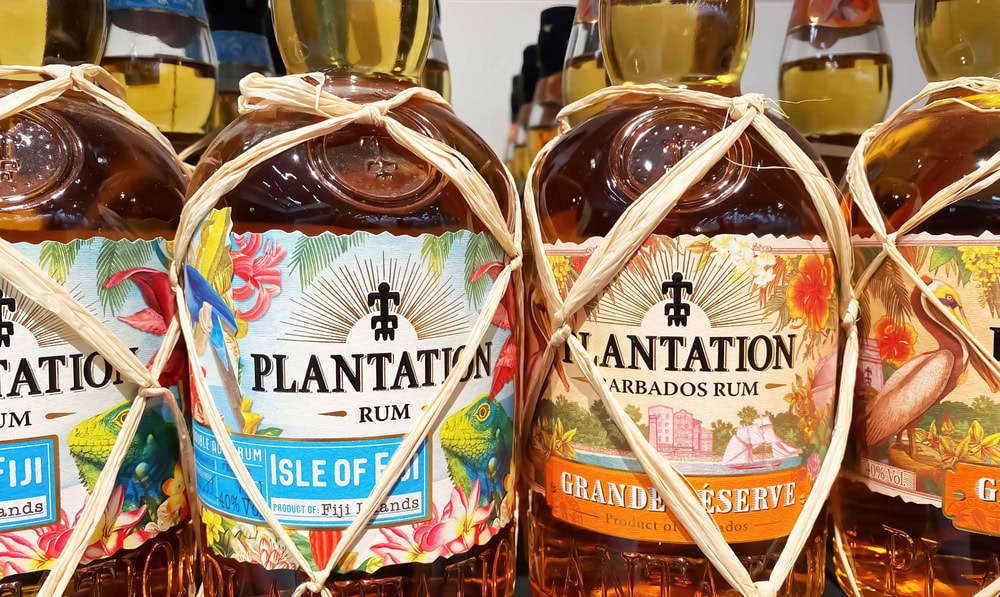
Notable brands like Mount Gay Rum, Cockspur and Foursquare are some of the most preferred in Barbados. Bajan rum is also often preferred as the middle ground between the lighter rums of Spanish-speaking islands and the more intense flavors of English-speaking territories. This versatility makes it perfect for taking home and sipping neat or using in cocktails. I don’t like a strong cocktails and found that Bajan dark rum was smooth, not overpowering, so I consider it one of the best places for rum that fit my flavor preference.
Bring home a bottle of rum to use for those specialty island cocktails.
Bajan Pepper Sauce
A staple in Barbadian cuisine, Bajan pepper sauce is a tangy, fiery yellow sauce made from a blend of Scotch bonnet peppers, mustard, vinegar, onions, garlic, and spices. The hot Scotch bonnet pepper brings a fruity heat alongside the tang of mustard and the sharp acidity of vinegar. Some Bajan pepper sauces incorporate turmeric for an earthy depth, while others may feature a hint of sweetness.
Traditionally applied to meat, poultry, and fish, its versatility adds a kick even to rice, vegetables or stews. Each household often has its own cherished hot sauce recipe, reflecting personal tastes and regional variations. However, the most popular store bought brands include Aunt May’s, Delish and The S.
You can find the sauce in gift shops around the island, where the different variations are open for taste testing. The best prices, however, will be found at a local markets or grocery stores.While it was tempting to keep all of the pepper sauce for myself, I tucked some into gift baskets for the holiday season.
Black Cake
Black cake isn’t really black, and there is controversy about which island gets credit for it origination, Jamaica or Barbados. Regardless, it is delicious!
Basically, it’s a spiced rum cake, sort of a rich, boozy fruitcake – only better. Dried fruits like raisins, cherries, and currants are soaked in Bajan rum with spices like cinnamon and nutmeg for weeks, to intensify their flavor. The batter is then studded with these rum infused fruits and nuts, and baked until dense and moist. After cooling, the cake may sometimes be soaked again in rum to intensify its flavor, or served with additional rum to create a unique dessert experience offering a complex sweetness and a lingering warmth from the rum.
The cake is a cornerstone of Barbadian celebration, especially during Christmas time. It’s really tasty (not like fruitcake that gets tossed during the holiday season).
The best black cake is going to come from a local family or bakery. If you’re buying Bajan rum cake to take home, though, you’ll most likely find packaged cakes at one of the Barbados gift shops around the island or at the airport.
Bajan Seasoning
The heart of Barbadian cuisine, Bajan seasoning is a vibrant green condiment bursting with fresh flavors. The blend includes herbs like thyme, parsley, and marjoram, blended with green onions, fiery chiliies (most often bonnet or habanero), and garlic.
When made fresh, it’s all crushed in a mortar and pestle. A splash of lime juice or vinegar is addd for a little acidity, and then it’s used as marinade, rubbed onto meats or vegetables, added to soups and stews, or used for basting.
Bajan seasoning infuses dishes with a savory, herbaceous notes, balanced by a touch of heat and bright citrus. Its versatility extends to vegetables, soups, and stews, adding a taste of the Caribbean to any meal. Pick some up at reasonable prices at a local grocery store. You’ll remember your Barbados vacation every time you cook with it. I use it often.
Guava Cheese
Another misnomer because it isn’t cheese at all.
Also known as “Goiabada”, guava cheese is a favorite Caribbean confectionery. This candy is a descendant of the quince cheese that Portuguese colonizers brought in, and is also popular in Latin America. Boooooooo for the colonizers, yay for the candy.
Made from ripe guavas, sugar, and sometimes lemon juice, it has a firm, jelly-like texture, and a deep, sweet flavor. The mixture is cooked down until thick and chewy, resembling a fruity fudge and then poured into molds to set. Traditionally, large batches are simmered in cauldrons over slow fires.
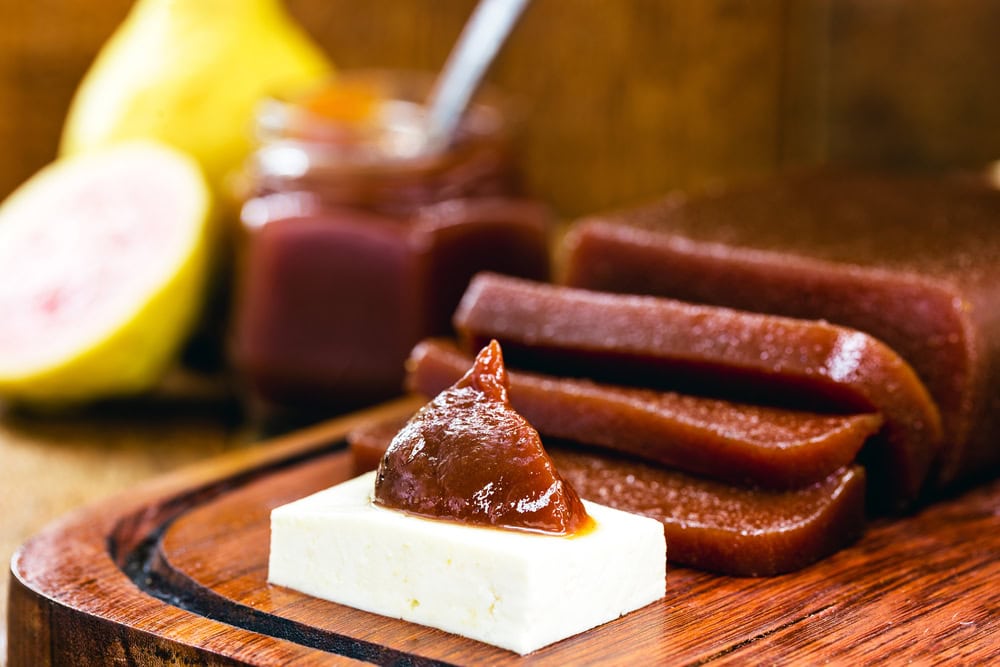
Guava cheese is often enjoyed as a sweet treat on its own, I have some sitting on my desk. It can also be paired with bread and real cheese, similar to the Portuguese combination of quince paste and Manchego cheese. It can also be used as a filling for pastries and desserts. You’ll find it used in many traditional Bajan recipes. It’s a perfect souvenir for your personal snacking or as a gift for someone with a sweet tooth.
Barbadian Coconut Sweet Bread
Barbadian coconut sweet bread is a traditional treat, often enjoyed with tea or coffee. It is not fluffy, unlike usual bread loaves, but is a denser, fruit studded delight with a richness from butter and a touch of brown sugar. However, the true magic ingredient is the shredded coconut.
While most breads feature flecks of coconut baked right into the dough, some variations hide a delightful coconut filling inside. Raisins, cherries and warm spices like nutmeg and ginger are also often used to elevate the flavor. The bread often makes an appearance during holidays and other festive occasions, but why wait – it’s just as perfect for any day of the week.
Coconut bread is best eaten fresh, so try to find a bakery where you can purchase just before leaving the island.
I have a recipe and am going to try to make it at home. If it turns out well, I’ll be sure to share my experience.
Local Crafts and Specialties
One of the easiest ways to buy local is by directly patronizing local artisans and crafts people. Here are some suggestions of items that make great souvenirs or gifts.
Mahogany
The mahogany tree is a significant and valued resource in Barbados. Known for its rich, reddish brown color and exceptional durability, the trees also play a vital role in the local ecosystem.
While large scale logging depleted their numbers, conservation efforts are in place to ensure the sustainable use of the wood. Historically, mahogany has been used in fine furniture making, ship building, wood carvings, and other artisanal crafts. Though not widely felled for furniture any longer, fallen branches are snapped up by local craftspeople and turned into mahogany souvenirs ranging from intricately carved figurines and jewelry boxes to elegant bowls and other decorative pieces with authentic Barbadian design.
Purchasing a mahogany souvenir is, quite literally, take a piece of Barbados home with you.
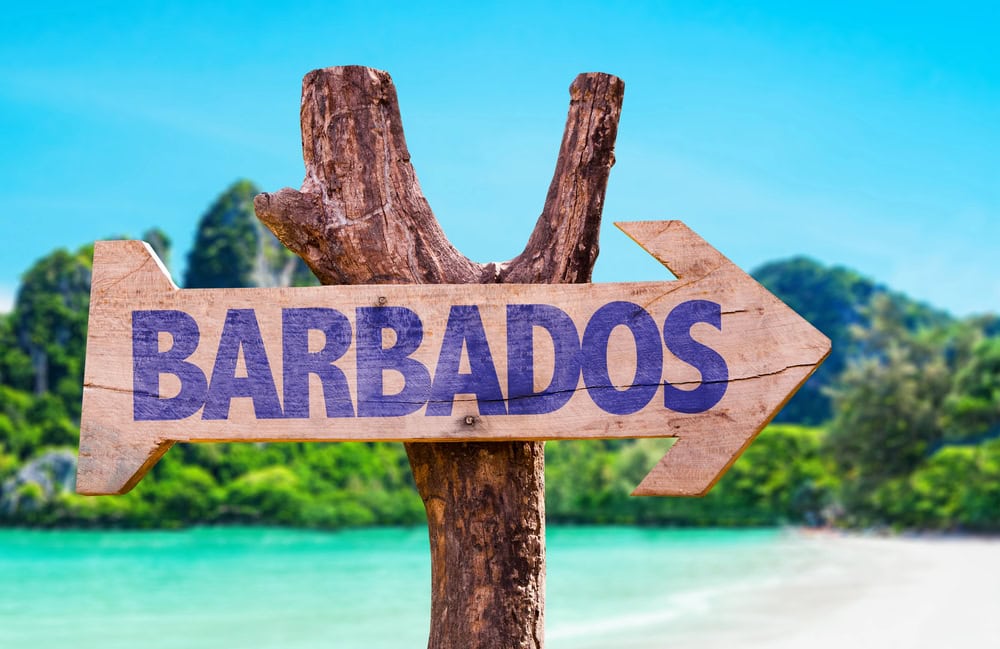
Musical Instruments
Barbados boasts a rich musical heritage which is reflected in its instruments. And some instruments, especially the smaller ones, make a perfect souvenir for back home.
Traditional instruments like the pump and tumtum drums made of hollowed tree trunks, bow fiddle, steel pan, conga drums, and shak-shak (maracas) are often handmade by skilled artisans. Tuk bands, Barbadian musical ensembles that play a blend of African and British folk music, still use many of these traditional folk instruments alongside the snare drum, double-headed bass drum, and pennywhistle.
Barbadian music instruments not only make captivating music, but are also souvenirs that symbolize the island’s rich artistic traditions and community spirit. You can find inexpensive versions at local souvenir shops. For real quality, though, check at higher end galleries and studios for recommendations.
Pottery and Ceramics
Barbadian pottery and ceramics reflect the island’s artistic heritage and craftsmanship through the signature Caribbean colours of blues and greens, and designs inspired by Barbadian flora, fauna, and other cultural motifs.
Local artisans are known for skillfully using local red clay and shaping it into functional hand-decorated dinnerware, serving pieces, vases, and decorative items. Ceramics make for souvenirs that are both practical and useful, as well as serving as a reminder of the beauty of Barbados.
Studios like Earthworks Pottery in White Hill and Hamilton’s Pottery in Saint Thomas craft beautiful, food grade ceramic pieces that are also dishwasher and microwave safe and lead free. Shopping directly with Bajan potters will help ensure you’re buying local artists and local handicraft. Street vendors and inexpensive souvenir shops are likely selling mass-produced knock oiffs.
Arawak Carvings
Arawak carvings represent the artistic legacy of the indigenous Arawak people of Barbados and the wider Caribbean.
These intricate carvings, usuallymade from wood or stone, depict mythological figures, animals, and geometric patterns. Arawak carvings reflect the spiritual and cultural beliefs of their creators, showcasing a deep connection to nature and the supernatural.
Today, Arawak carvings are cherished as symbols of Barbados’ Indigenous heritage, preserved in museums and admired for their craftsmanship, storytelling, and contribution to understanding the island’s ancient past.
Finding the real deal will be difficult, as there are many mass-produced replicas. Check with shops selling authentic Barbadian crafts, ask for referrals at a gallery of Caribbean art, and do some research before leaving home.
Batik Textiles
Batik is an art form that involves a wax-resist dyeing technique to create colorful patterns on fabric. The process of applying hot wax to the fabric in specific designs before dyeing is often repeated with multiple colors to create complex patterns. Dipped in colorful baths, the unwaxed areas absorb the dye, revealing the pattern once the wax is removed.
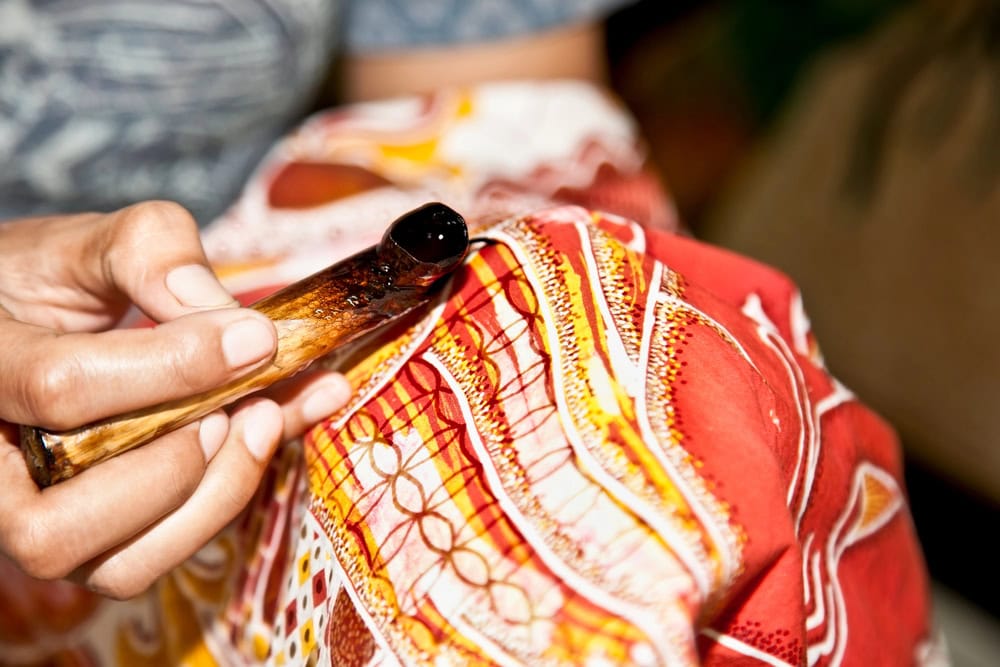
These textiles are used for clothing, home decor, and artwork, with traditional designs inspired by local flora, fauna, and folklore such as fish and turtles, reflecting the island’s natural beauty. They are popular souvenirs, and appear in everything from shirts and dresses, to scarves, tablecloths and wall hangings.
I bought a square throw pillow cover that features flowers is varying bright shades of pink. When I returned home, I bought a pillow to stuff inside, and it’s now decorating the couch in my office.
For Pinterest
Save to your favorite travel and shopping Pinterest boards
